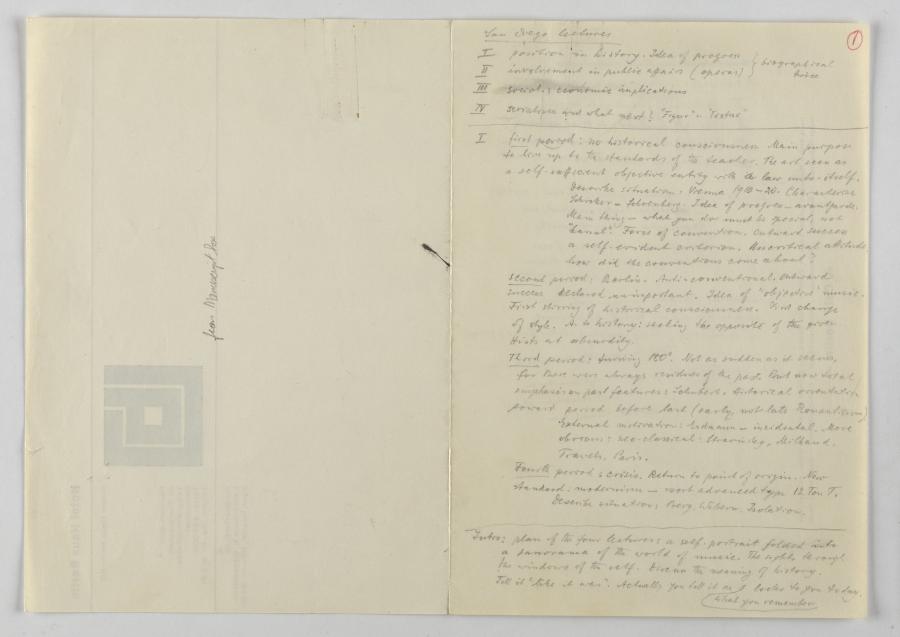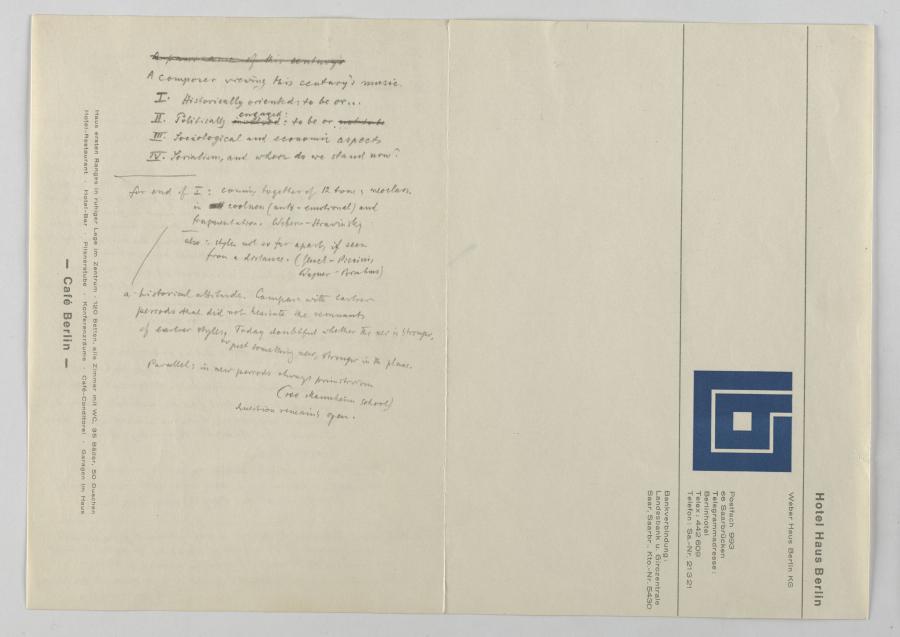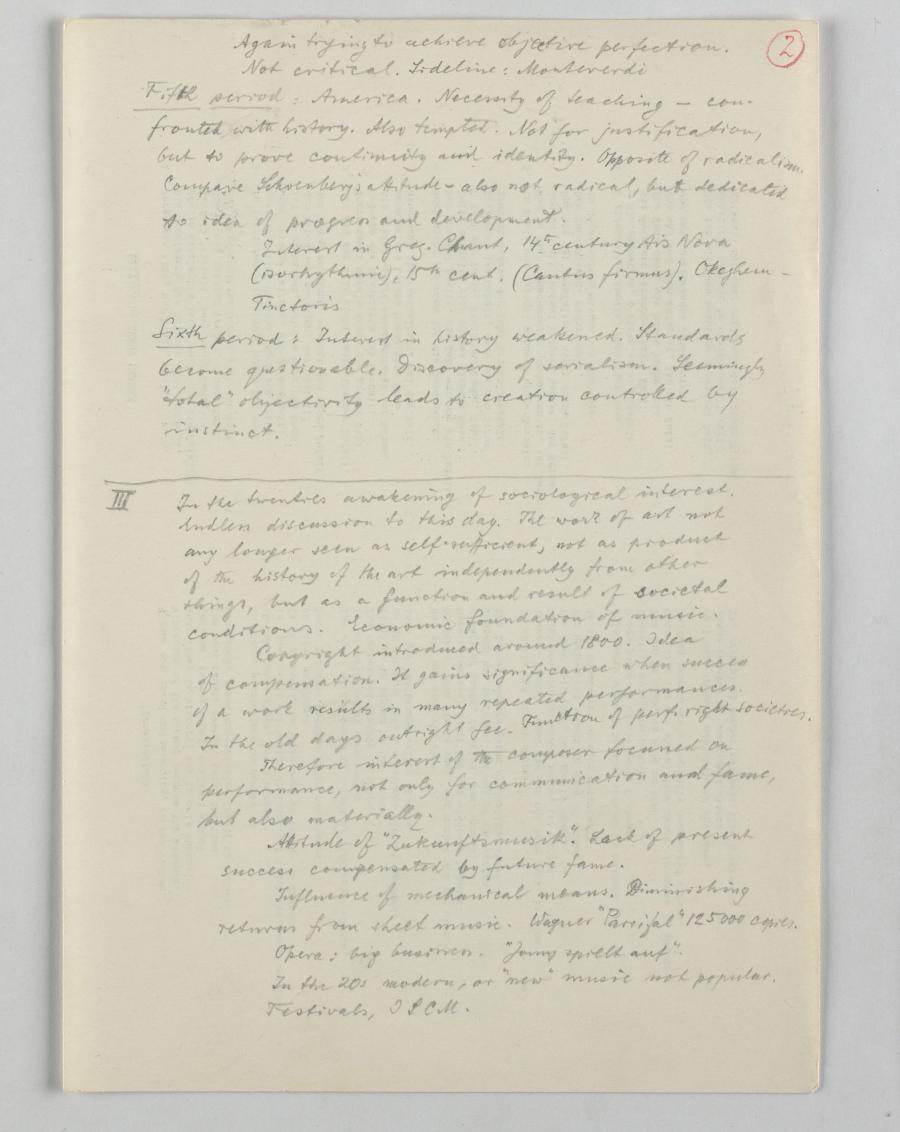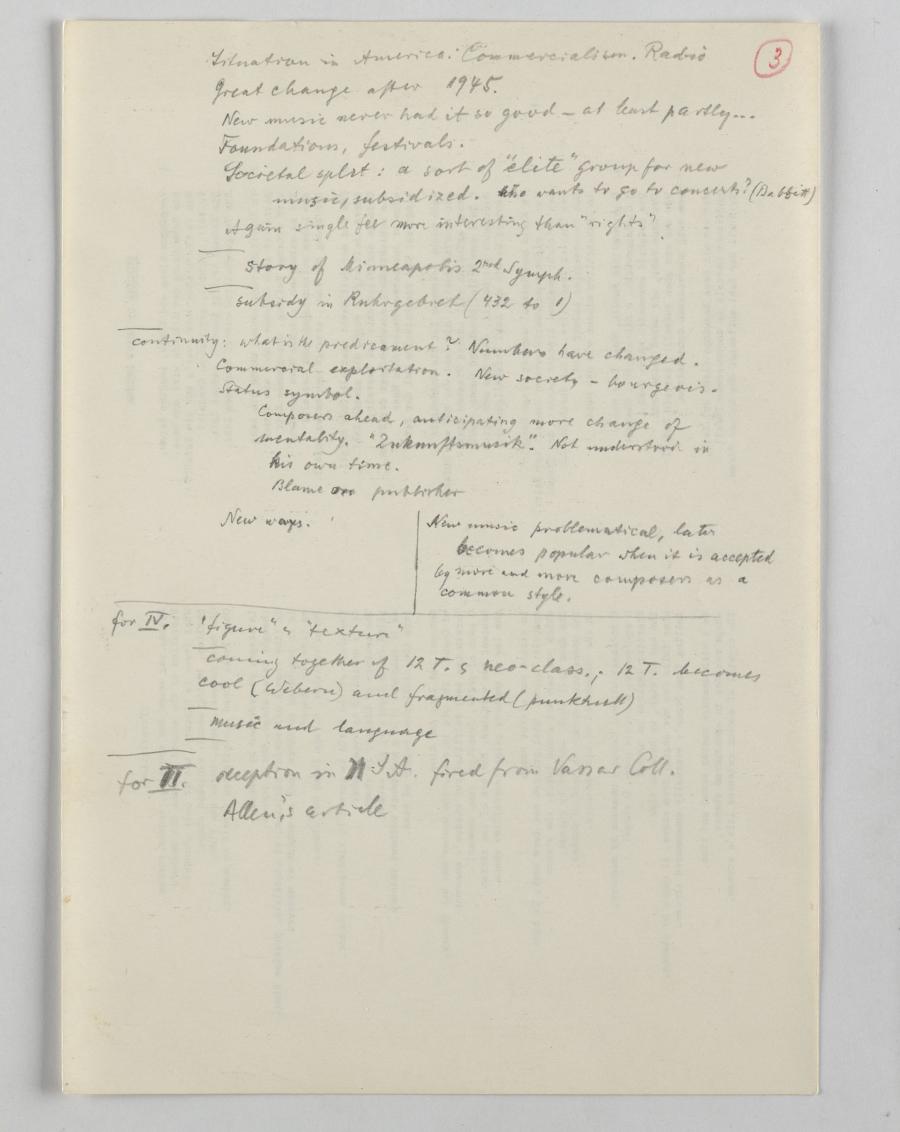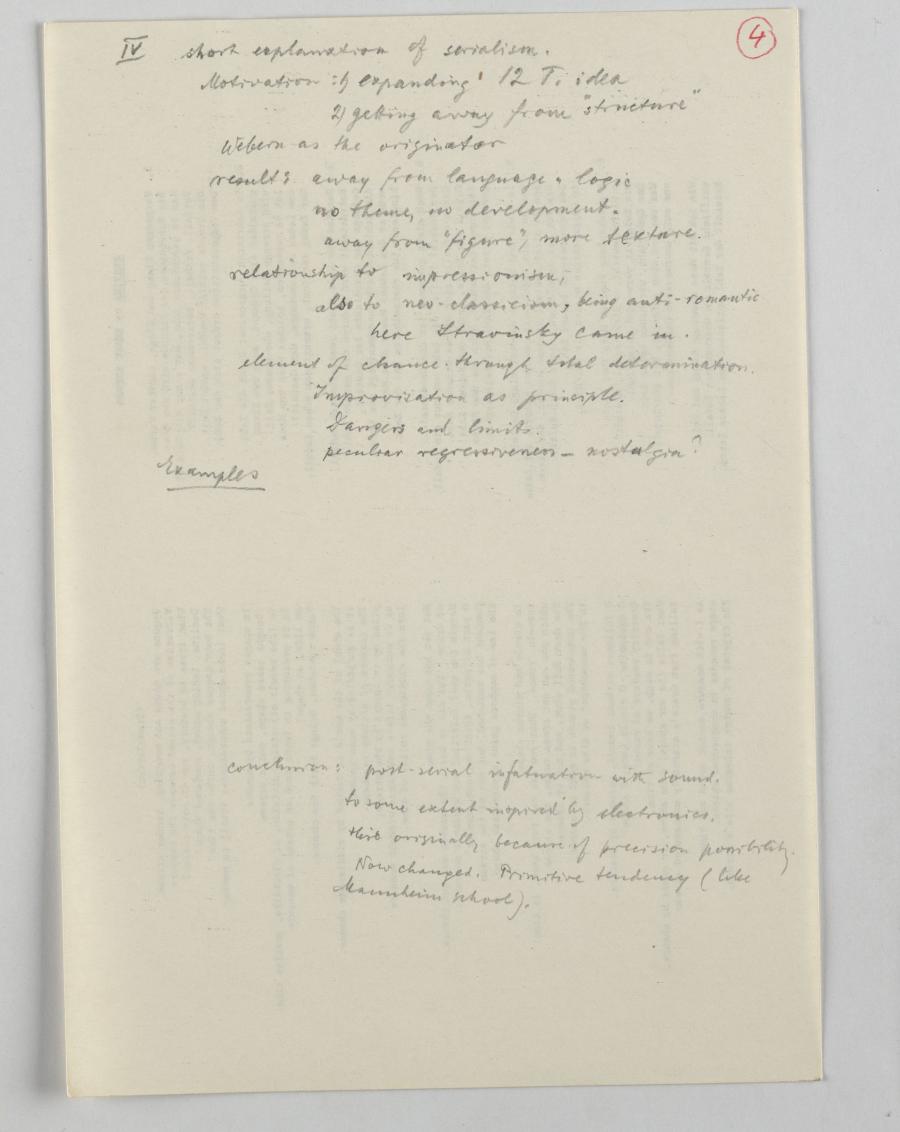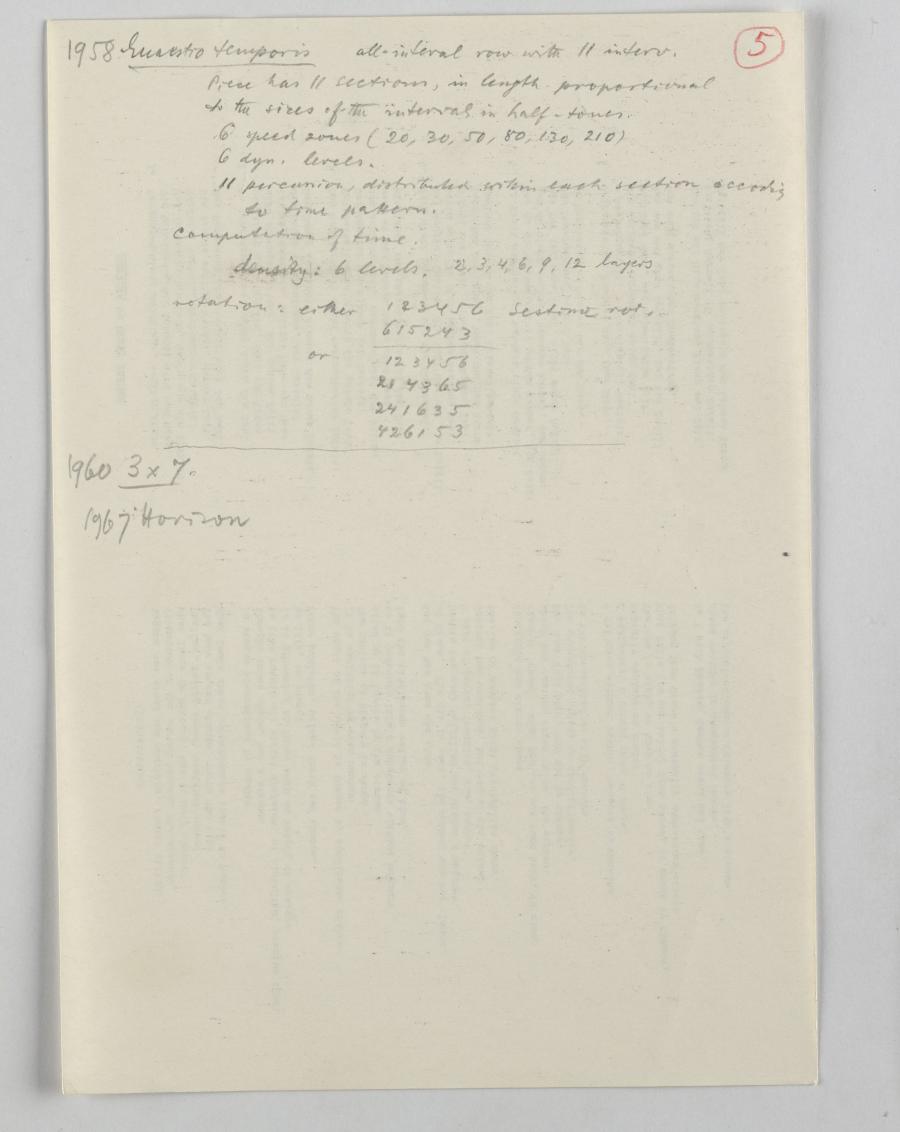San Diego [UCSD] Lectures
Abstract
In Vorbereitung für die Reihe von vier Vorträgen an der UCSD machte sich Krenek Notizen, die teilweise nur punktuell andeuten, was er in den einzelnen Lectures thematisieren wollte, aber trotzdem die gründliche Planung von den sich inhaltlich berührenden Vorträgen erkennbar machen.
1
I position in history. Idea of progress II involvement in public affairs (operas) biographical twice III sociol. & economic implications IV serialism and what next? "Figur" v. "Textur"San Diego lectures
I
first period: no historical consciousness. Main purpose
to live up to the standards of the teacher. The art seen as
a self-sufficient objective entity with a law unto itself.
Describe situation: second period: Third period: turning 180°. Not as sudden as it seems,
for there were always residues of the past. But now total
emphasis on past features: Fourth period: crisis. Return to point of origin. New
standard: modernism - most advanced type 12 Ton T.
Describe situation:
Intro: plan of the four lectures: a self portrait folded into
a panorama of the world of music. The sights through
the windows of the self. Discuss the meaning of history.
Tell it "like it was". Actually you tell
2
Again trying to achieve objective perfection.
Not critical. Sideline: Fifth period: th century Ars Nova
(isorhythmic), 15th cent. (Cantus firmus). Sixth period: Interest in history weakened. Standards
become questiorable. Discovery of serialism. Seemingly
"total" objectivity leads to creation controlled by
instinct.
III
In the twenties awakening of sociological interest.
Endless discussion to this day. The work of art not
any longer seen as self-sufficient, not as product
of the history of the art independently from other
things, but as a function and result of societal
conditions. Economic foundation of music.
Copyright introduced around 1800. Idea
of compensation. It gains significance when succes
of a work results in many repeated performances.
In the old days outright fee. Function of perf. right societies.
Therefore interest of the composer focussed on
performance, not only for communication und fame,
but also materially.
Attitude of "Zukunftsmusik". Lack of present
success compensated by future fame.
Influence of mechanical means. Diminishing
returns from sheet music.
3
Situation in nd Symph.
subsidy in
4
IV
short explanation of serialism.
Motivation:
1) expanding 12 T. idea
2) getting away from "structure"
Examples
conclusions:
post-serial infatuation with sound.
to some extent inspired by electronics.
this originally because of precision possibility.
Now changed. Primitive tendency (like
5
1958 Quaestio temporis all-inteval row with 11 interv.
Piece has 11 sections, in length proportional
to the sizes of the intervals in half-tones.
6 speed zones (20, 30, 50, 80, 130, 210)
6 dyn. levels.
11 percussion, distributed within each section according
to time pattern.
computation of time.
density: 6 levels. 2, 3, 4, 6, 9, 12 layers
rotation: either
1 2 3 4 5 6 Sestina rot.
6 1 5 2 4 3
or
1 2 3 4 5 6
2 1 4 3 6 5
2 4 1 6 3 5
4 2 6 1 5 3
. 19673x7
